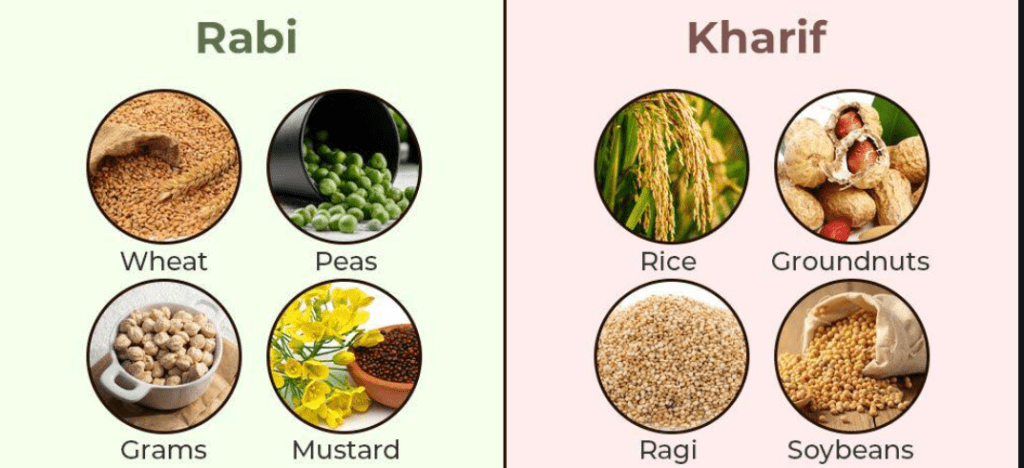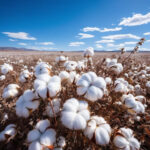The Ministry of Agriculture and Farmers Welfare has recently released the second advance estimates of production for major Kharif and Rabi season crops for the year 2023-24. This release provides valuable insights into the expected food grain production for the upcoming seasons. Let’s delve into the details of these estimates and what they mean for the agricultural sector.
Overview of Kharif and Rabi Season Crop Production
The total estimated production for Kharif food grains is 1541.87 lakh metric tons, while for Rabi food grains, it is estimated at 1551.61 lakh metric tons. These estimates provide an overall picture of the food grain production expected for the year 2023-24.
Details of Specific Crop Productions
- Wheat: The estimated production of wheat is 1120.19 lakh metric tons, which shows an increase compared to the previous year.
- Rice: Kharif rice production is estimated at 1114.58 lakh metric tons, with Rabi rice production estimated at 123.57 lakh metric tons.
- Maize: Kharif maize production is estimated at 2 million metric tons, while Rabi maize production is estimated at 97.50 lakh metric tons.
- Grain: Kharif grain production is estimated at 91 lakh metric tons, with Rabi Shri Anna production estimated at 24.88 lakh metric tons.
- Tur: The production of Tur is estimated at 3.9 million metric tons.
- Gram: Gram production is estimated at 61 lakh metric tons.

Img Src:-geeksforgeeks.com
Production of Shree Anna and Jowar
The production of Shree Anna in Kharif is estimated at 128.91 lakh metric tons, while in Rabi, it is estimated at 24.88 lakh metric tons. Similarly, the production of Jowar in Kharif and Rabi is estimated to be 15.46 Lakh MT and 24.88 Lakh MT, respectively, showing an increase compared to the previous year.
Production of Nutritive/Coarse Grains
The estimated production of nutritive/coarse grains in Kharif is 356.11 lakh metric tons, while in Rabi, it is 144.61 lakh metric tons, indicating a significant contribution to overall food grain production.
Production of Pulse Crops
The production of pulse crops like Tur, gram, lentils, soybean, and rapeseed and mustard is estimated to meet the demand for these essential food items.
Wheat, Rice, and Cotton Production
- Wheat: The estimated production of wheat is 1120.19 lakh metric tons, showing an increase compared to the previous year.
- Rice: Kharif rice production is estimated at 1114.58 lakh metric tons, with Rabi rice production estimated at 123.57 lakh metric tons.
- Cotton: Cotton production is estimated at 323.11 lakh bales (170 kg each), indicating a substantial contribution to the textile industry.
- Sugarcane: Sugarcane production is estimated at 4464.30 lakh metric tons, highlighting its importance in the sugar industry.
In conclusion, the release of production estimates for major Kharif and Rabi season crops for 2023-24 by the Ministry of Agriculture and Farmers Welfare provides valuable insights into the expected food grain production for the upcoming seasons. These estimates play a crucial role in planning and managing agricultural activities, ensuring food security and economic stability in the country.
Click Here For More Latest Information
FAQs
- What are the estimated production figures for Kharif and Rabi food grains for 2023-24?
- Kharif food grain production is estimated at 1541.87 lakh metric tons, while Rabi food grain production is estimated at 1551.61 lakh metric tons.
- What is the estimated production of wheat for the year 2023-24?
- The estimated production of wheat is 1120.19 lakh metric tons, showing an increase compared to the previous year.
- How much rice production is estimated for the Kharif season in 2023-24?
- Kharif rice production is estimated at 1114.58 lakh metric tons.
- What is the estimated production of cotton for the year 2023-24?
- Cotton production is estimated at 323.11 lakh bales (170 kg each).
- What is the significance of the production estimates for major Kharif and Rabi season crops for 2023-24?
- These estimates play a crucial role in planning and managing agricultural activities, ensuring food security and economic stability in the country.










